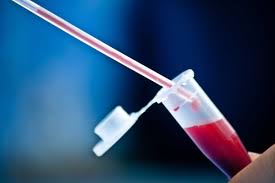 Managing cholesterol level is a health issue faced by both men and women at all age levels. When your physician suggests that you have your cholesterol levels evaluated it usually means that you must have blood work drawn early in the morning after having no food for at least 12 hours. The test results will show cholesterol levels in milligrams per deciliter of blood. Your doctor will help evaluate your cholesterol levels to determine your risk of heart disease. He will also take into account other factors such as your age, family history, smoking and history of high blood pressure.
Managing cholesterol level is a health issue faced by both men and women at all age levels. When your physician suggests that you have your cholesterol levels evaluated it usually means that you must have blood work drawn early in the morning after having no food for at least 12 hours. The test results will show cholesterol levels in milligrams per deciliter of blood. Your doctor will help evaluate your cholesterol levels to determine your risk of heart disease. He will also take into account other factors such as your age, family history, smoking and history of high blood pressure.
Interestingly, cholesterol in your body comes from two different sources. The majority of cholesterol is made by your liver using saturated fat from your diet. Some cholesterol also comes from foods such as eggs, meat and dairy products. This means that cholesterol levels can often be managed through dietary changes and exercise. Because cholesterol levels have an effect on your health it’s important for people to understand how to read cholesterol levels and make the necessary adjustments to improve their health and lifestyle.
Extra cholesterol in your blood can be stored in your arteries causing them to narrow. This is a process called atherosclerosis. When large deposits build up this will obstruct the flow of blood. This process, when it happens in the heart, can cause an individual to have a heart attack. This process will also contribute to peripheral vascular disease as well.
 Cholesterol levels should be monitored periodically for men over the age of 35 and women over the age of 45. Prior to this point baseline measurements should be taken in order to watch and monitor levels. Screening tests are often done at earlier ages to pick up people who may have family history of high cholesterol levels so that early treatment may reduce their risk of heart attack and stroke. Exactly how often cholesterol levels will be measured after the age of 35 in men or 45 in women will depend upon baseline cholesterol levels and other risk factors of heart disease that the individual may have.
Cholesterol levels should be monitored periodically for men over the age of 35 and women over the age of 45. Prior to this point baseline measurements should be taken in order to watch and monitor levels. Screening tests are often done at earlier ages to pick up people who may have family history of high cholesterol levels so that early treatment may reduce their risk of heart attack and stroke. Exactly how often cholesterol levels will be measured after the age of 35 in men or 45 in women will depend upon baseline cholesterol levels and other risk factors of heart disease that the individual may have.
There are five different numbers which the physician will evaluate when determining whether cholesterol levels are too high, borderline or desirable. The first level is the total cholesterol number. This number should be less than 200 mg per deciliter. If other cholesterol measurements, such as LDL, HDL and triglyceride levels, are also desirable total blood cholesterol below 200 puts you at a relatively low risk for coronary heart disease. But even with low risk, individuals should eat a heart healthy diet and get regular physical exercise in order to maintain their low risk profile.
A borderline measurement of between 200 and 239 mg per deciliter is not considered risky if the LDL, HDL and triglyceride levels continue to be within normal limits. At this point you should work with your physician to create a prevention and treatment plan that includes lifestyle changes, heart healthy diet, getting regular physical exercise and avoiding tobacco smoke.
High risk total cholesterol levels over 240 mg per deciliter of blood will significantly increase the risk of stroke, heart attack and peripheral vascular disease. People whose total cholesterol levels are greater than 240 usually have twice the risk of coronary heart disease as people whose cholesterol level is in the desirable range. If test results don’t show LDL cholesterol, HDL cholesterol or triglycerides a fasting cholesterol profile should be ordered in order to more fully evaluate the risks involved. It is in this blood level range of cholesterol that physicians, after evaluating other blood work, will determine whether cholesterol lowering drugs are an appropriate recommendation for the individual.
 Total cholesterol is broken down into two different types of cholesterol. The first is HDL or good cholesterol levels. With HDL cholesterol the higher the level the better it is. A low-level of HDL cholesterol will put an individual at higher risk for heart disease. Smoking, being overweight and being sedentary can all result in lower HDL levels. HDL cholesterol is considered good cholesterol because doctors believe it is responsible for carrying cholesterol back to the liver where it is used to produce bile and carried out of the body.
Total cholesterol is broken down into two different types of cholesterol. The first is HDL or good cholesterol levels. With HDL cholesterol the higher the level the better it is. A low-level of HDL cholesterol will put an individual at higher risk for heart disease. Smoking, being overweight and being sedentary can all result in lower HDL levels. HDL cholesterol is considered good cholesterol because doctors believe it is responsible for carrying cholesterol back to the liver where it is used to produce bile and carried out of the body.
The second type of cholesterol is LDL or bad cholesterol. The lower the LDL cholesterol the lower the risk of heart attack and stroke. LDL cholesterol levels that are less than 100 mg per deciliter are optimal while those that are over 190 mg per deciliter places the individual in a very high risk category. Numbers that range between 130 and 159 are considered to be borderline high.
The next number which is evaluated is triglyceride. Triglycerides are a form of fat and people with high triglyceride levels often have a high total cholesterol level which includes a high LDL cholesterol and low HDL cholesterol. Normal triglyceride levels will fall below 150 mg per deciliter while very high levels are greater than 500 mg per deciliter. Physicians become concerned when triglyceride levels are borderline high ranging between 150 and 199 mg per deciliter. Many people who are overweight or obese, are physically inactive, smoke cigarettes or consume excess amounts of alcohol will have high triglyceride levels.
The main therapy to reduce triglyceride levels is to change lifestyle habits which means controlling weight, eating a heart healthy diet, getting regular physical activity and avoiding tobacco.
The final number which is evaluated when looking at cholesterol levels is the ratio of LDL to HDL cholesterol. Some experts put more value on the ratio than that of the total number of cholesterol in terms of predicting heart disease. This theory holds that the higher the HDL number would be considered preventative of cardiac problems and the lower the LDL number would also decrease the risk of heart disease and stroke. Some professionals argue that the HDL number is more important in predicting heart disease in women. At this time research is being done and information continues to be updated to determine the exact predictive value of using the LDL to HDL ratio as a measure of risk of heart attack and stroke.
Having cholesterol levels drawn and measured is a simple way of determining overall health risks for heart attack and stroke. While it may point to an individual making greater lifestyle changes it is a cost-effective measure that may prevent heart attacks and strokes in the future.
Resources:
American Heart Association: What Your Cholesterol Levels mean
MayoClinic: High Cholesterol
http://www.mayoclinic.com/health/high-blood-cholesterol/DS00178/DSECTION=tests-and-diagnosis
National Cholesterol Education Program: High Blood Cholesterol
http://www.nhlbi.nih.gov/health/public/heart/chol/wyntk.htm
Readers Digest: Making Sense of Your Cholesterol and Blood Pressure Readings
http://www.rd.com/health/wellness/making-sense-of-your-cholesterol-and-blood-pressure-readings/
Cleveland Clinic: What do Cholesterol Numbers Mean
http://my.clevelandclinic.org/healthy_living/cholesterol/hic_what_do_cholesterol_numbers_mean.aspx


Leave a Reply